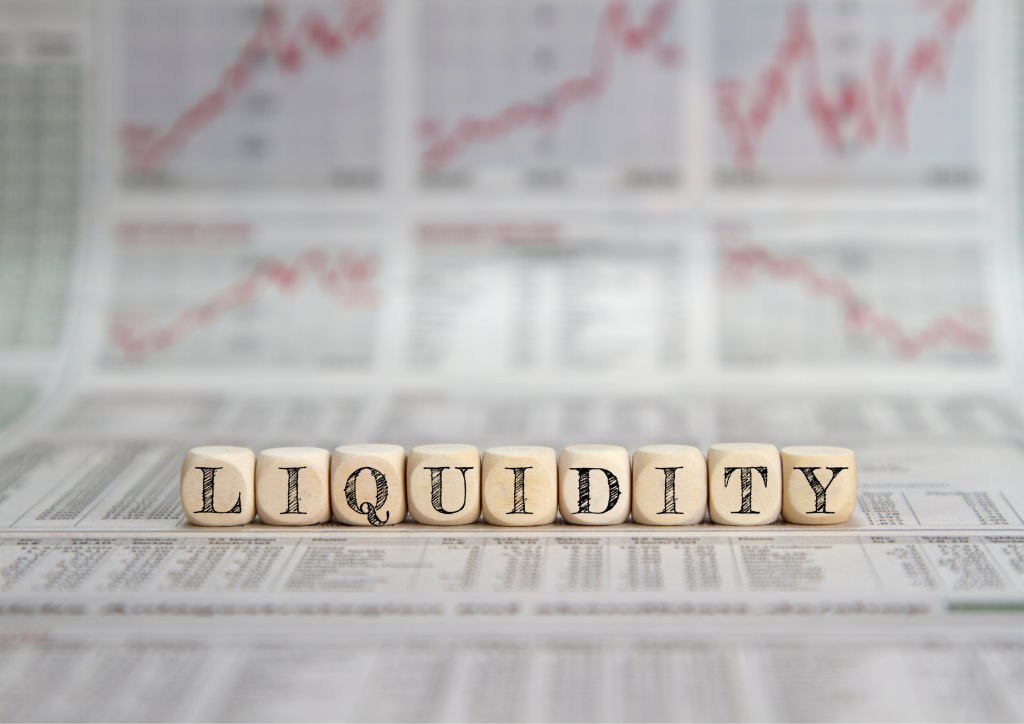The Foreign Exchange Market, popularly known as Forex, is a decentralized global market where all the world’s currencies trade. Forex, with a daily trading volume exceeding $6 trillion, is the largest and most liquid financial market in the world. The market operates 24 hours a day, five days a week, and spans across major financial centers such as New York, London, Tokyo, and Sydney.
Trading on the Forex market requires a profound understanding of key financial concepts. Traders must grasp concepts like leverage, spread, lots, pips, and, importantly, liquidity. Understanding these concepts helps traders make informed decisions, manage risks effectively, and, ultimately, increase their chances of making profitable trades.
One critical concept in Forex trading is liquidity. The term ‘liquidity’ is thrown around a lot, but its understanding remains elusive to many, especially beginners. The next sections will explore the concept of liquidity, its role in the Forex market, and why every Forex trader needs to understand it.
Also Read: Forex Trading and Market Sentiment
Understanding Liquidity
Liquidity, in simple terms, refers to the ease with which an asset or security can be bought or sold without affecting its price. A highly liquid market allows for large amounts of an asset to be bought or sold without any significant price change.
Liquidity has two primary aspects: market liquidity and accounting liquidity. Market liquidity refers to the extent to which a market allows assets to be bought and sold at stable prices. On the other hand, accounting liquidity is a measure of the ease and speed with which an asset can be converted into cash without affecting its market price.
Liquidity functions by providing smoothness to market operations. In a liquid market, traders can transact (buy or sell) with speed and with minimal impact on the price. High liquidity reduces the cost of trading and the risk of price manipulation. Conversely, in an illiquid market, buying or selling an asset can result in substantial price changes, causing what’s known as “slippage” – when you get a different price than expected due to a lack of market liquidity.
Liquidity in the Forex Market

Liquidity in Forex refers to a currency pair’s ability to be bought or sold without causing significant price movement. High liquidity levels mean there is a significant number of market participants interested in buying and selling a particular currency pair, which leads to smoother transactions and tighter spreads.
Forex market participants, including retail traders, commercial companies, central banks, and large financial institutions, provide liquidity in Forex. These players trade currencies for various reasons – speculation, hedging, or international trade, contributing to the overall liquidity of the Forex market.
The Forex market operates around the clock, but liquidity levels vary during different trading sessions due to the overlap of operation times of major financial centers. The most liquid period is during the London and New York session overlap, while the least liquid is when the US and Asian sessions do not overlap.
High liquidity in Forex makes it easier for traders to enter and exit positions at the price levels they desire. It also results in lower trading costs (spreads), reduced slippage, and less market manipulation. On the flip side, low liquidity can lead to higher spreads and increased slippage.
The Importance of Liquidity in Forex Trading
The spread is the difference between the bid (buy) and ask (sell) price of a currency pair. In a highly liquid market, the spread tends to be tight because there are many buyers and sellers. This reduces trading costs for traders.
Liquidity and market volatility are inversely correlated. When liquidity is high, market volatility tends to be low, and vice versa. This is because, in a liquid market, large volumes of transactions can occur without significantly moving the market prices.
Understanding liquidity helps in risk management. Traders can avoid trading in illiquid market conditions where price slippage is likely to occur. By knowing when the Forex market is most liquid, traders can time their trades to periods when it’s easier to enter and exit positions.
Liquidity in Forex directly affects execution speed. In a liquid market, trades are executed quickly at the desired price. In an illiquid market, trade orders might not get filled at the desired price, resulting in slippage – the difference between the expected price and the price at which the trade is executed.
The Most Liquid Currencies in the Forex Market

The most traded (and thus, most liquid) currency pairs in the Forex market are the EUR/USD (Euro/US Dollar), USD/JPY (US Dollar/Japanese Yen), and GBP/USD (British Pound/US Dollar). These currency pairs are referred to as the “Majors” due to their high liquidity and low spreads.
The high liquidity of these currency pairs is due to the size of their respective economies, the volume of international trade, and their role as global reserve currencies. The U.S. Dollar, in particular, is the world’s primary reserve currency, contributing significantly to its high liquidity.
Factors Influencing Liquidity in the Forex Market
Impact of Economic Reports and News
Economic reports and news events significantly impact Forex liquidity. For instance, the release of high-impact data like unemployment rates, GDP figures, or inflation data can cause sharp price fluctuations, leading to transient periods of high liquidity due to an increase in trading activity. However, leading up to the release of significant news, traders may choose to refrain from trading, causing a temporary dip in liquidity. Therefore, traders need to keep abreast of an economic calendar to anticipate these shifts in liquidity.
Role of Central Banks and Large Financial Institutions
Central banks and large financial institutions like hedge funds, commercial banks, and multinational corporations have a pivotal role in the Forex market, contributing significantly to its liquidity. These entities trade Forex for various reasons, including rebalancing currency reserves, facilitating international trade, hedging against currency risk, or profiting from currency price movements.
When central banks intervene in the currency market, either to stabilize their home currency or as a part of a monetary policy initiative, they deal with large volumes of currency. This action can lead to an immediate increase in liquidity for the specific currency.
Similarly, when large financial institutions make substantial Forex trades, it leads to an immediate spike in the liquidity of the currencies involved. Thus, their participation is vital in ensuring a liquid market.
Influence of Geopolitical Events
Geopolitical events such as elections, policy changes, trade wars, or conflicts can greatly influence Forex liquidity. These events can incite uncertainty among traders, prompting them to exit positions or hold off from entering new ones, reducing market liquidity.
For instance, in the event of political instability or conflict in a region, currencies related to that region may experience a drop in liquidity due to increased risk. Conversely, safe-haven currencies, which traders turn to in times of market uncertainty, may see a spike in liquidity.
Understanding Liquidity Risk in Forex Trading

Forex liquidity risk refers to the possible difficulty a trader may encounter when attempting to exit a position because of insufficient market liquidity. Essentially, it’s the chance that you won’t be able to purchase or sell a currency pair without significantly changing its price, or that a position won’t be able to be closed out soon enough to avoid a loss or lock in a profit.
Fewer trades are being made at times of low liquidity, therefore there may not be as many buyers as sellers when you are looking to purchase or sell. This absence of participation can result in wide price gaps, high slippage, and even substantial losses for traders.
Forex trading can be significantly impacted by liquidity risk. For instance, huge trades might result in significant price changes in a market with minimal liquidity. As a result, you might be unable to complete a deal at the price point you choose, which could result in smaller gains or bigger losses. This discrepancy between the expected price of a trade and the price at which the trade is actually executed is known as slippage, and it’s a common occurrence during periods of low liquidity.
Additionally, illiquidity can result in higher transaction costs. The spread, which is the difference between the bid (buy) and ask (sell) price, typically widens in illiquid markets. The wider the spread, the more you’re effectively paying to execute each trade, which can eat into your profits.
Ways to Manage and Mitigate Liquidity Risk in Forex Trading

Despite its potential impact, there are strategies to manage and mitigate liquidity risk in Forex trading:
Trade During Peak Liquidity Hours
The Forex market experiences varying levels of liquidity throughout the day. Trading during peak liquidity hours—such as when the London and New York markets overlap—can reduce the likelihood of facing liquidity risk.
Use Limit Orders
A limit order allows you to specify the maximum price you’re willing to pay when buying a currency pair or the minimum price you’re willing to accept when selling. This can prevent you from executing trades at unfavorable prices.
Trade Liquid Currency Pairs
Major currency pairs like EUR/USD, USD/JPY, and GBP/USD are more liquid due to their higher demand. Trading these pairs can reduce the chances of facing liquidity issues.
Monitor Market News
Keep an eye on market news and economic events. Situations like major economic announcements or geopolitical events can cause temporary liquidity issues.
Conclusion
Understanding liquidity is crucial for successful Forex trading. It influences trading costs, market volatility, risk management, and execution speed. By understanding how liquidity works and how to manage liquidity risk, traders can improve their overall trading performance.
A solid understanding of liquidity allows traders to make informed trading decisions, manage risks effectively, and potentially increase their trading profits. Therefore, learning about liquidity should be an essential part of any trader’s Forex education.
FAQs
What are the most liquid trading times in the Forex market?
The most liquid trading times in the Forex market typically occur during the overlap of the London and New York sessions, which is approximately between 8:00 AM and 12:00 PM (EST). This period witnesses the highest trading volume due to the simultaneous activity of two of the world’s largest financial markets.
How can I manage liquidity risk in Forex trading?
Managing Forex liquidity risk involves several strategies. Firstly, understanding when the Forex market is most liquid and timing your trades accordingly can be beneficial. Limit orders can also be used to specify the maximum price at which you’re willing to buy or the minimum price at which you’re willing to sell, helping to protect against severe price slippage in less liquid conditions. Additionally, maintaining a diverse portfolio and using risk management tools like stop losses can mitigate potential losses due to liquidity risk.
How do news events affect liquidity in the Forex market?
Major economic news events can significantly impact liquidity in the Forex market. Before the release of significant news, there might be a decrease in liquidity as traders wait on the sidelines. However, immediately after the news release, there could be a surge in trading activity, resulting in high liquidity. This often leads to increased volatility, and hence, it is important for traders to monitor economic calendars and be aware of such events.



